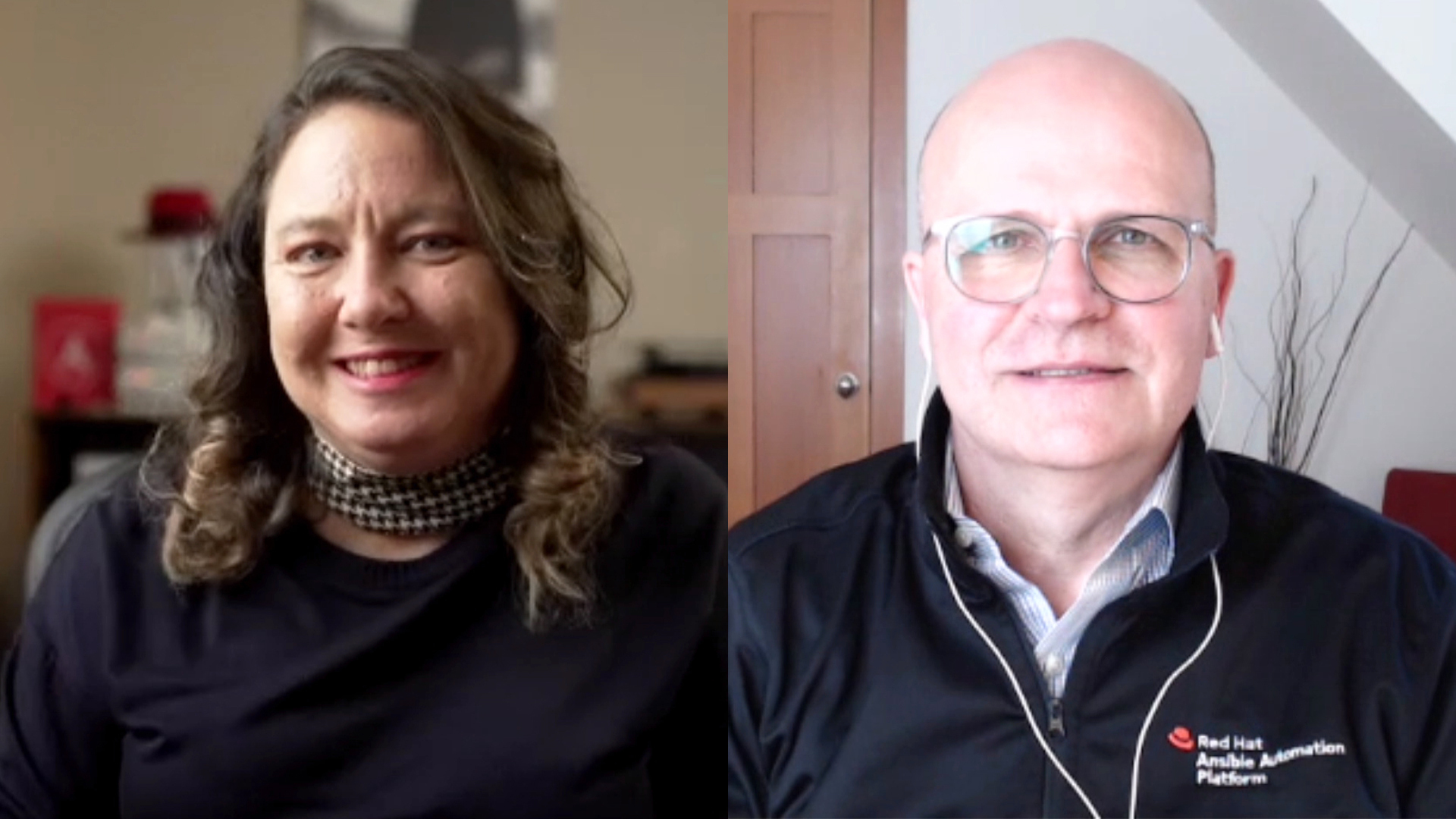 APPS
APPS
 APPS
APPS
 APPS
APPS
As open hybrid cloud is the enabler for efficient digital business, linking on-premises, cloud and edge, Red Hat’s Ansible Automation platform connects ops teams across the company.
“Ansible provides a common language and common automation backplane across these different teams and across these different personas,” said Thomas Anderson (pictured, right), vice president of Red Hat Ansible Automation at Red Hat Inc. “It’s allowed us to be this connective tissue or glue across these different silos or domains of the organization.”
Anderson and Robyn Bergeron (pictured, left), senior principal community architect, Ansible, at Red Hat, spoke with John Furrier, host of theCUBE, SiliconANGLE Media’s livestreaming studio, during today’s Red Hat Summit. They discussed innovations and community updates in the Red Hat Ansible Automation platform and how it has become the “connective tissue” for businesses adopting open hybrid cloud. (* Disclosure below.)
The democratization of application delivery has led to a proliferation of independent teams. Today, application developers, infrastructure owners, network engineers, SecOps, GitOps and other combination ops teams need access to deliver infrastructure and applications. This has made delivery faster and more agile, but it has created the potential for wasted time in replication of effort with teams recreating things that already exist. It also opens potential for security slips as teams can neglect configuration and compliance policies.
“Ansible has the kind of levers that each of those communities, whether it’s application programming interfaces, or command-line interfaces, or event-based automation, or webhooks, etc. … all of those interfaces or modalities are accessible under Ansible automation,” Anderson stated.
The beauty of Ansible from an end-user perspective is how easy it is to learn and how easy the language is to learn, according to Bergeron.
“It doesn’t matter how much of a rocket scientist you are, everybody appreciates simplicity,” she said.
But it’s not just personas that Ansible links. The integration between the Ansible Automation platform, Red Hat’s advanced cluster management product and the OpenShift platform allows native applications running on OpenShift to be able to talk to an Ansible Automation operator that’s running on that same platform and “do things off-platform for their existing customers that were already using Ansible before,” said Anderson, explaining how Ansible enables customers to connect their cloud native platforms with their existing ecosystems and infrastructures. “Ansible has become the connective glue across all of these different environments, tying traditional information technology, cloud IT, cloud-native, you name it,” he said.
Breaking down silos and linking everyone with everything brings previously isolated teams, such as security and networking, into the community. The newly announced curated Ansible security automation solution, which addresses connecting SecOps with IT, is supported by Ansible’s traditional strengths in compliance and configuration enforcement and Red Hat’s acquisition of Kubernetes-native security platform provider StackRox Inc.
“We’re starting to say: ‘What are the things inside that SecOps workflow that may require integration or automation, packaging automation with other parts of the environment?’” Anderson stated. “We’re bringing all of those pieces together as we move forward.”
Ansible Content Collections is another area that has been updated to support the developer and partner community.
“Ansible benefits from the network effect,” Bergeron stated. “Like the snowball rolling downhill, the more people that latch on to what you’re doing, the more people benefit.”
The number of developers using Ansible automation is so high that Bergeron “guarantees” that 99% of applications are connected to Ansible.
“Everything else that people are using is also being automated with Ansible. So you’d be crazy to not want to participate and make sure that you’re providing the best ‘Ansibled’ experience for your application,” she concluded.
Watch the complete video interview below, and be sure to check out more of SiliconANGLE’s and theCUBE’s coverage of Red Hat Summit. (* Disclosure: TheCUBE is a paid media partner for Red Hat Summit. Neither Red Hat Inc., the sponsor for theCUBE’s event coverage, nor other sponsors have editorial control over content on theCUBE or SiliconANGLE.)
Support our mission to keep content open and free by engaging with theCUBE community. Join theCUBE’s Alumni Trust Network, where technology leaders connect, share intelligence and create opportunities.
Founded by tech visionaries John Furrier and Dave Vellante, SiliconANGLE Media has built a dynamic ecosystem of industry-leading digital media brands that reach 15+ million elite tech professionals. Our new proprietary theCUBE AI Video Cloud is breaking ground in audience interaction, leveraging theCUBEai.com neural network to help technology companies make data-driven decisions and stay at the forefront of industry conversations.